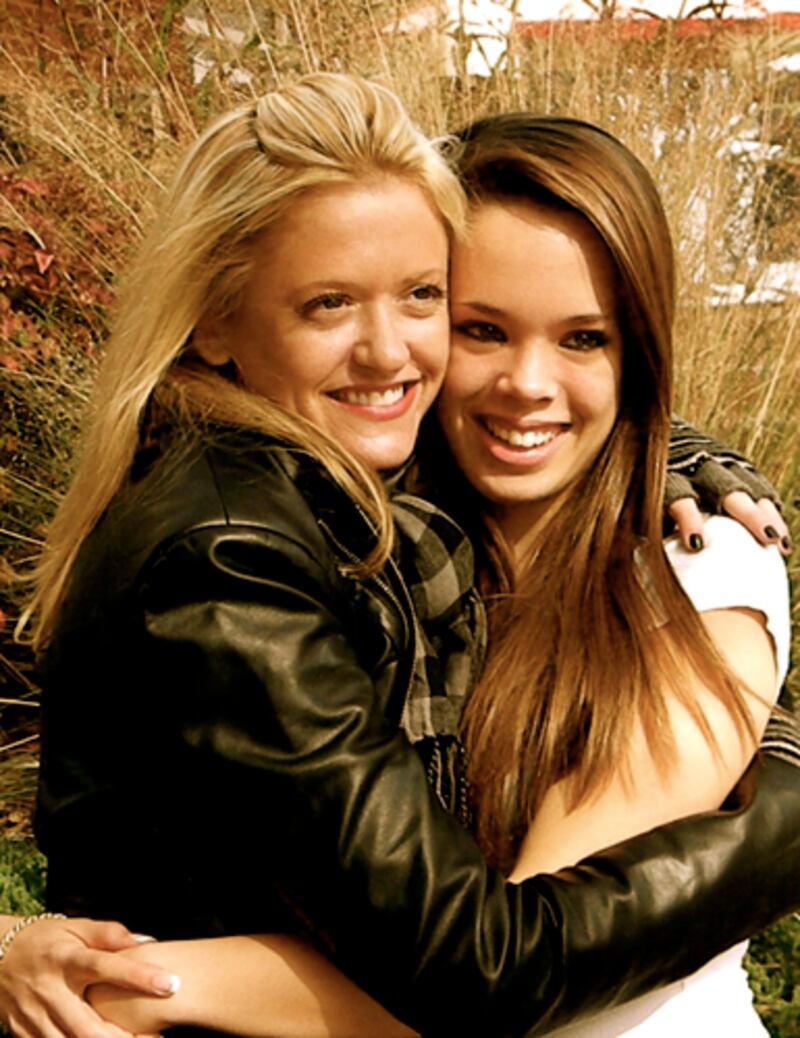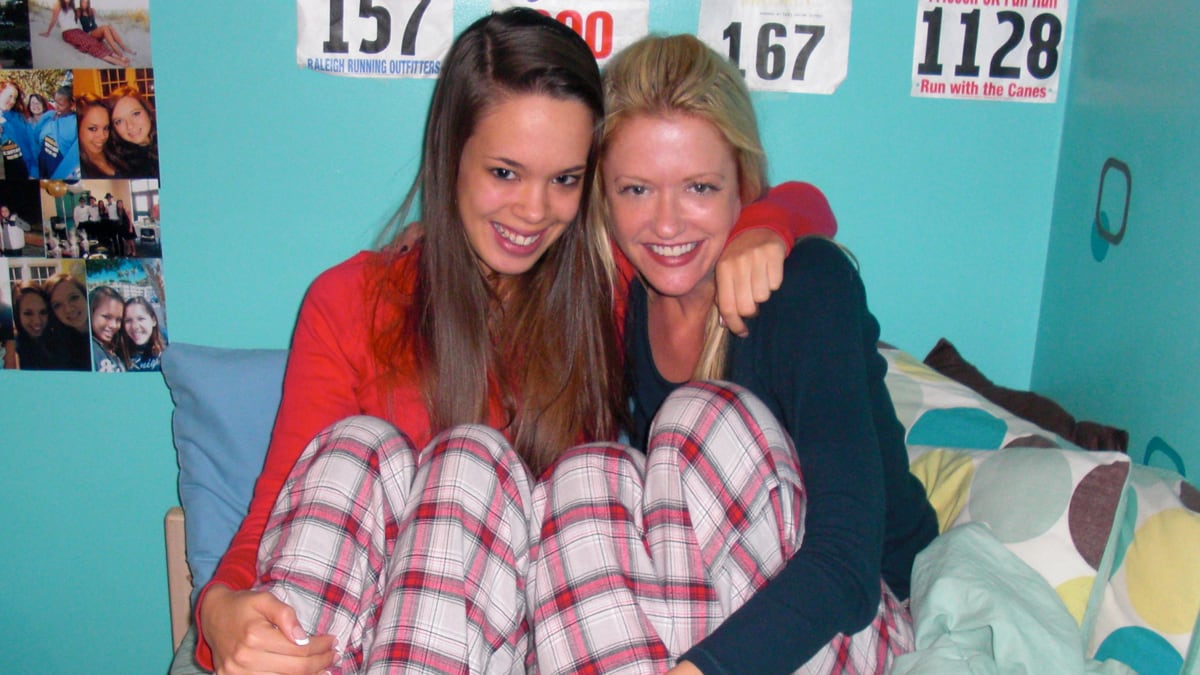“My daughter friended me on Facebook.”
It’s not an uncommon phrase in 2012.
But what if the daughter in question is one you gave up for adoption 17 years ago? One you haven’t seen or spoken to since the day she was born?
ADVERTISEMENT
I fought the urge to email her adoptive parents when I got the friend request. Instead, I placed a breathless call to my parents in California—“Someday just arrived!”—and shared the milestone announcement on my blog.
I devoured all 793 of her Facebook pictures, and a slow, digital dance began. She “liked” one of my photos. I “liked” one of hers. She posted a video on my Wall. I commented on her status update. We started exchanging 300-word messages in which I learned her likes (meat, makeup, flirting, tidy rooms), her dislikes (rules, televised sports, drugs), and talents (running, tanning, cooking).
We danced faster—toward our first real-life conversation on Dec. 7, 2011.
When she answered the phone, the sound of her voice raced past my eardrums, unlocking doors and attics deep inside me. Something from within expanded, contracted, and sprang open. Within seconds, our stories were tumbling over each other. I learned the names of her best friends and that she prefers life in North Carolina, where she lives now, to Idaho, where she was born. She shared details of her first kiss and asked how much weight I gained during pregnancy. I answered her questions about whether Italy is as beautiful as she’s heard and why in the world I became a vegetarian.
“I’m so curious,” I said, “about how you found me. Did you ask your parents for my name?”

“Not exactly, she admitted. “I went looking for my birth certificate last year, and once I had your name, Google did the rest. I was so excited to find my birth story on your blog,” she said. “I printed it so I could read it whenever I wanted. In fact,” she added, “I cyberstalked you for, like, a year before friending you.”
This meant that she knew I ended my short-lived affair with her biological father, Griffin, before realizing I was pregnant. I had waited until my California high-school diploma was in hand before breaking the news that no parents want to hear.
“Not quite the path we had in mind for you,” they’d responded. “But we’ll support you and your ... situation.”
My teenage brain considered the “situation,” and when neither abortion nor single motherhood added up, I announced adoption. The logistics weren’t entirely clear to me—it was 1993 and pre-Internet—but my dad was adopted in the ‘50s, so I figured it wouldn’t be too complicated.
My parents encouraged me to take some time and be certain of my choice, so they arranged a summer trip to Idaho, where my father had attended college. My younger brother, Phil, and I arrived in Moscow and found jobs: me as a florist’s assistant and he as an apprentice plumber. We met for lunch most weekdays and the mall on weekends. At five months pregnant, I decided to stay through winter, but Phil returned to California for his senior year of high school.

I corresponded with potential adoptive parents and spent a long weekend in Boise with the frontrunners. Jack and Lisa aced my teenage litmus test: 30-ish homeowners with master’s degrees; Christian but not culty; political views that didn’t make me cringe. On Dec. 29, 1993, I went to work, left at lunch, and gave birth by nightfall. Open-adoption paperwork was signed the next day, and I placed Laurie in the arms of her ecstatic parents. There was no hesitation or regret: I knew adoption was the right decision for her—and for me.
While she spent her first year doing newborn things, I returned to my parents’ house in California, enrolled in junior college, and took a museum job. Meanwhile, Griffin made a trip to Idaho. He petitioned for custody and contested the adoption for six months—until the day my brother Phil, who had introduced us, died in a car accident. Griffin brought his condolences to Phil’s funeral, along with a white flag.
A few years later, I graduated on Mother’s Day with an English degree from Berkeley and eventually established a career as a publicist in New York City. The adoptive parents sent pictures annually, and as I watched Laurie grow up from afar, my hope that she lived a lovely and uncomplicated life was continually affirmed.
She was 11 years old when I fully realized how the one-two punch of giving her up and seeing my parents’ grief over Phil had affected my view on having children. It took a boyfriend dumping me at age 29 because I didn’t want kids before I finally confronted the reason why: if I didn’t have children, I couldn’t lose them.
I managed to let go of my fear, fall in love, and marry a man who was in no rush to procreate. In 2009 Alberto and I were building a life together in New York City when he died suddenly of a heart attack at 41. We were just shy of our fourth wedding anniversary. In my immediate grief, I wished I’d given birth to a piece of him, but this was soon exchanged for a sense of relief that I hadn’t. After all, I could barely bathe, feed, or clothe my widowed self.
I’d only just begun to regain my equilibrium when Laurie made Facebook contact.
During that first phone conversation, she shared her wish for her 18th birthday: “All I want ... is for you to come to North Carolina. We’ll finally meet! And have a sleepover!”
“But your parents,” I paused. “Are they cool with—?”
“Totally! I already asked them! Promise!”
“Then I’m all in,” I said, laughing.
Three weeks later, I set eyes on the girl who is one part Griffin, one part me, and equal parts stunning. We hugged each other hard, and our tears erupted like champagne bubbles. Together we swayed, a single silhouette of fabric and skin, 18 years to the day from when I last saw her.
“I’ve been dreaming about this moment,” she murmured.
“Me too,” I whispered. “How’s it going so far?”
“It’s perfect,” she sighed.
I pulled her closer.
We spent the day holding hands and driving through her city. She showed me her high school, her favorite coffee spot, the boutique where she works weekends. We both ordered grilled cheese for lunch and realized we were wearing the same color of nail lacquer. We laughed at the fact that we both tell stories with the same spastic limbs, and we end sentences with the same last-word emphasis. By the time we ducked into a photo booth together, Laurie was like someone with whom I’d exchanged a thousand postcards and emails.
Except I hadn’t.
Her adoptive parents had invested the 18 years of love, discipline, and resources that shaped this incredible girl. And now, Laurie had invited me into her life as a girlfriend—or a cool aunt. In terms of best-case scenarios, I couldn’t have imagined one more ideal.
When I climbed the stairs of the home she shares with her parents and adopted sisters, I took a step into her bedroom—and caught my breath. The aqua color scheme, the wall-size collage of photos with friends, the shopping bags: it’s as if I’d walked into my high-school room.
In that moment, in that room, I felt exactly her age.
And exactly twice her age.
The paradox continued into the night: when I reunited with her parents, when I joined the hysterics of a birthday dinner with her and 12 teenagers, and, finally, when we pulled on twin sets of pajamas and fell asleep discussing the merits of Justin Bieber’s documentary.
In the morning, we lay sprawled out in her trundle bed, reflecting on how we envisioned our reunion.
“I’ve always had this clear picture of where my life would be when we met,” I said. “And though I’m closer to that place than I’ve ever been, I’m not quite there yet.”
“But you’ve lived,” she insisted. “You’ve traveled the world—and written a book! You’ve met famous people and sky-dived and swam with sharks! You went to Berkeley—and Rio! And seriously, Tré,” she paused, “you live in New. York. City.”
Wait, I thought. She gets me?
I had assumed there would be awkward questions. I had been prepared to fall short of her expectations. Prepared to justify my unconventional life path. But there, in her aqua-painted bedroom, there was no judgment, only admiration.
Laurie shared my idea of a life well lived. She accepted me for the 30-something widow that I am—and the scandalous teenager that I was.
“You totally get me,” I said, grinning.
“I do,” she agreed. “Because you’re me. And I’m you ... Mom.”
In the six months since our sleepover, her text messages have become my favorite part of the day. Our phone conversations jump from books to boys and from prom dresses to summer plans. This July, nearly one year after her friend request, we will reunite in California, where she’ll meet my excited parents and grandparents.
We’re both counting the days until the week of sleepovers, but today, I’m anticipating the sound of her voice on my first Mother’s Day, 18 years in the making.




